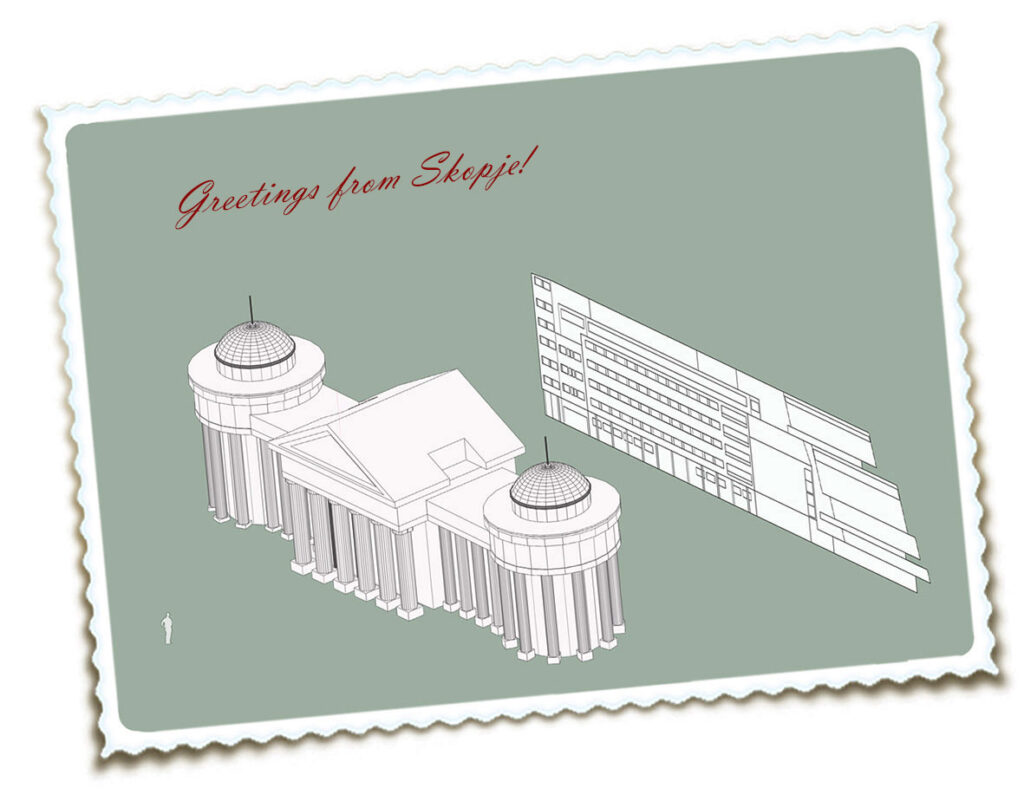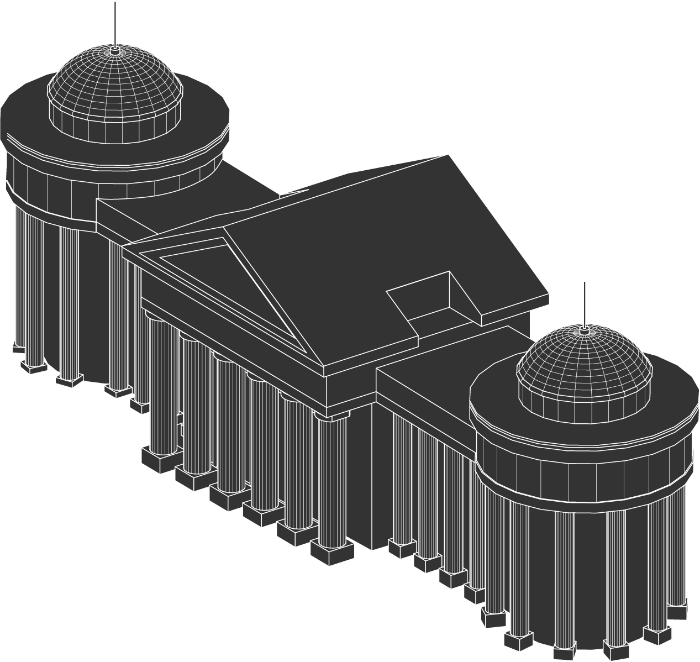Slobodan Zhivkovski
2014
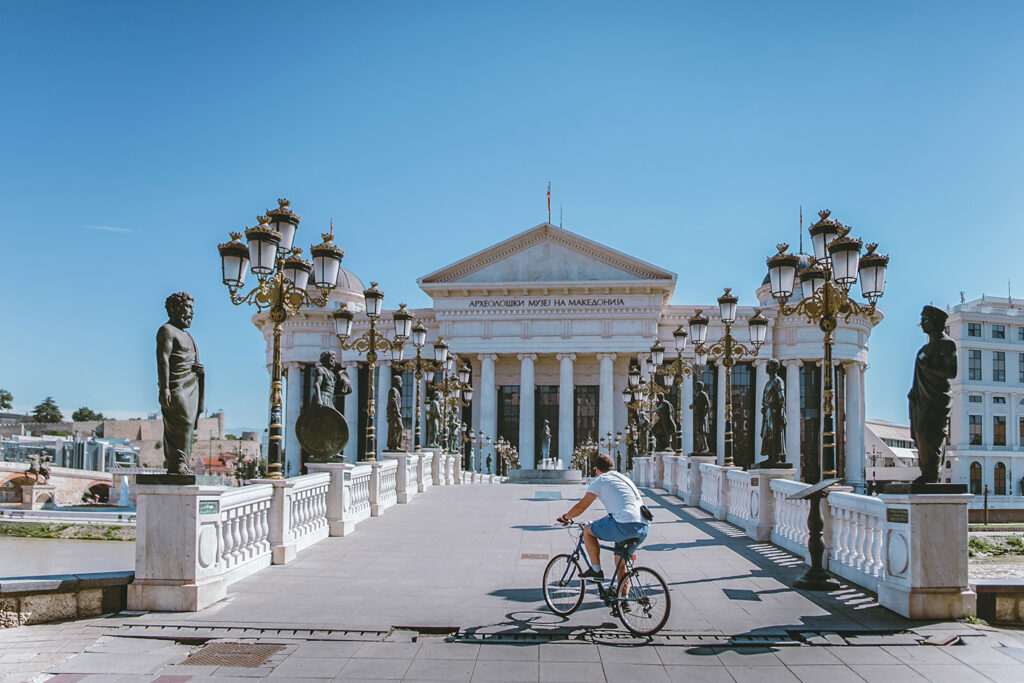
Photo by Toa Heftiba
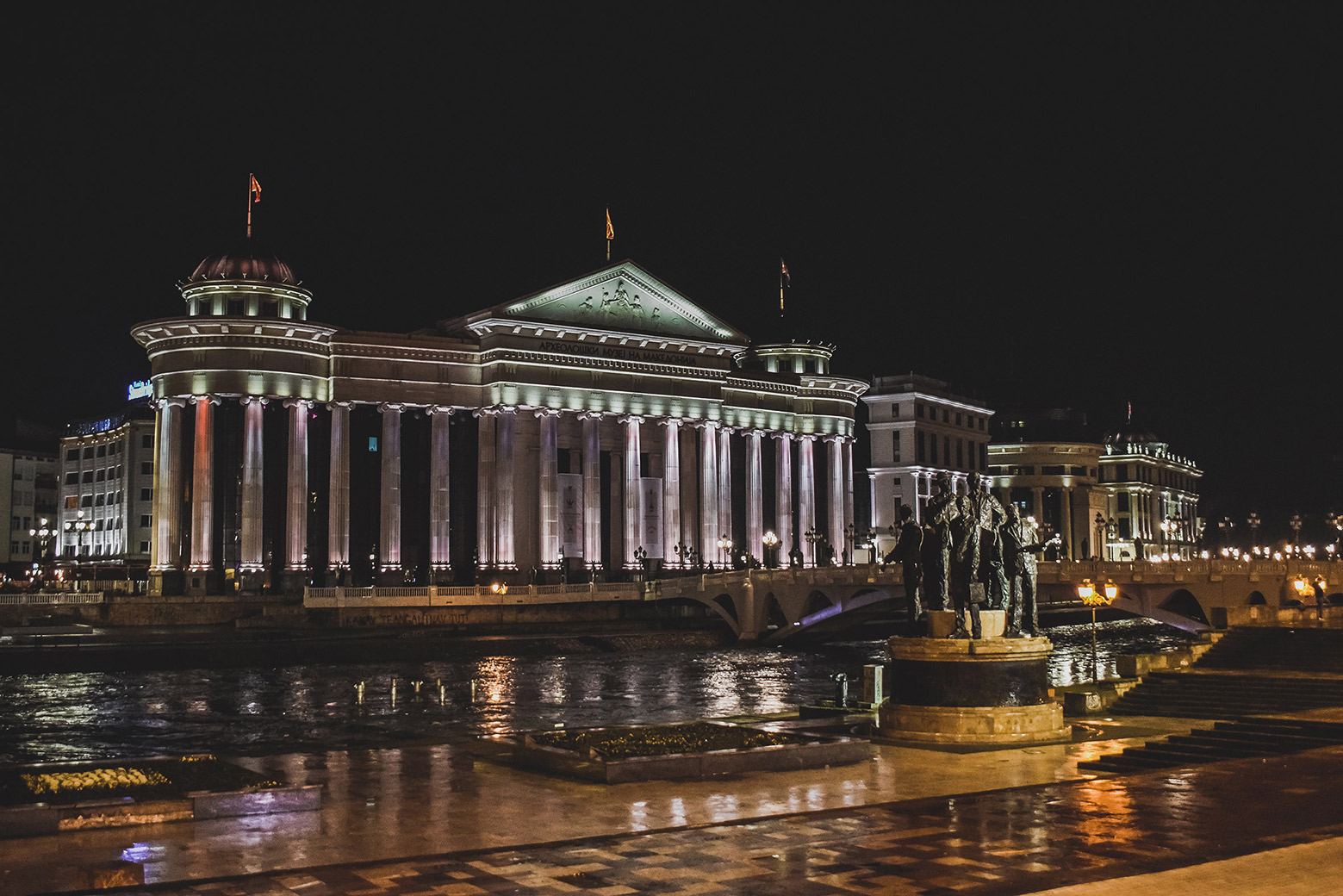
Photo by Dimitris Vetsikas
The new building of the Archaeological Museum of Macedonia was built in 2014 by Slobodan Zhivkovski. This building also contains the State Archives of Macedonia and the Constitutional Court of the Republic of Macedonia. Same as the triumph arc Porta Makedonija, it is a sample of the new architectural layer of the city, constructed as part of the Skopje2014 project. It is an example of a newly constructed piece of architecture with the goal of becoming an urban artefact by visually imposing new historical values.
The Archaeological Museum was relocated from the building of the National Museum of Macedonia (a building which contained the archaeological, historical and ethnological museums of the country). The National Museum of Macedonia is an existing urban artefact, being a building from the post-earthquake renewal of Skopje – its third modernization period. It was built in 1972 by architects Mimoza Tomikj and Kiril Muratovski.
By combining the relocated Archaeological Museum, the State Archives and the Constitutional Court into one container, the government is giving tremendous importance to this new building, built in an ancient classical style. All of the historical artefacts and state facts, along with the statehood itself have been placed in a container with an ancient look designed in the 21st century.
The scale of the archaeological museum combined with the architectural language of its facade, its symmetry and emphasized central entrance is trying to fabricate magnificence and produce an image of power and importance. The plan of the building however, does not complement this idea at all. The grand frontal image of the building suggests an enormous building behind it, but it is not followed by one. Once a person enters the museum they immediately have to turn left or right as they have reached its back.
The scale of the new building doesn’t correspond with its surroundings and is very disrespectful towards its physical context. It leaves no distance between itself and the previously existing buildings behind it, which shows that the reason for its size is not just to fabricate an appearance of importance but also to completely cover and erase from sight the buildings behind it. As with others, this example again shows ideological goals behind aesthetics. The hidden buildings are: Komunalna Banka – a bank from 1955 by architect Slavko Brezovski (postwar, second modernization period) and a part of the Cultural Center from 1979 by Stefan Kacin, Jurij Princes, Bogdan Spindler, Marjan Ursic (post-earthquake, third modernization period).
The archaeological museum also occupied the public area on the river bank and left very little space between itself and the river. From the lack of physical distance to its surroundings it can be concluded that the placement of this new building is forced an deliberate. The former public area along the river was erased and a new entering bridge to the museum was constructed, contributing to the grandiose treatment of the building’s front.
In conclusion, the building of the Archaeological Museum / State Archive / Constitutional Court of the Republic of Macedonia presents itself as a building of great importance. It is inventing historical values by using antique language, which are emphasized in scale and visually forced. It is a building that is very disrespectful to its surroundings, completely hiding the previously existing architecture from sight and disconnecting it from the public area.
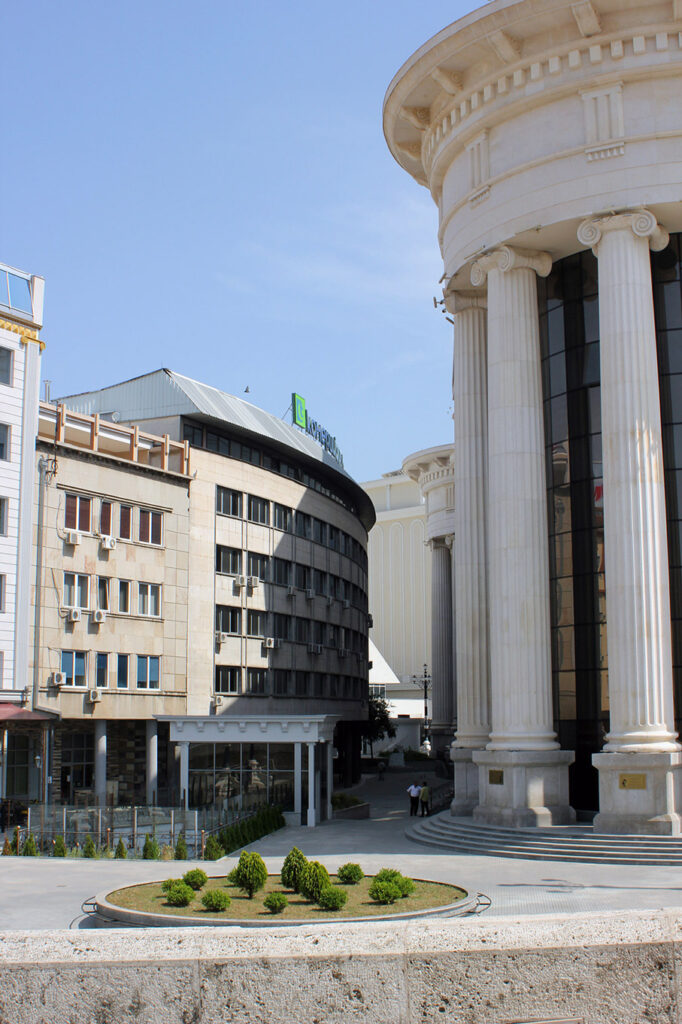
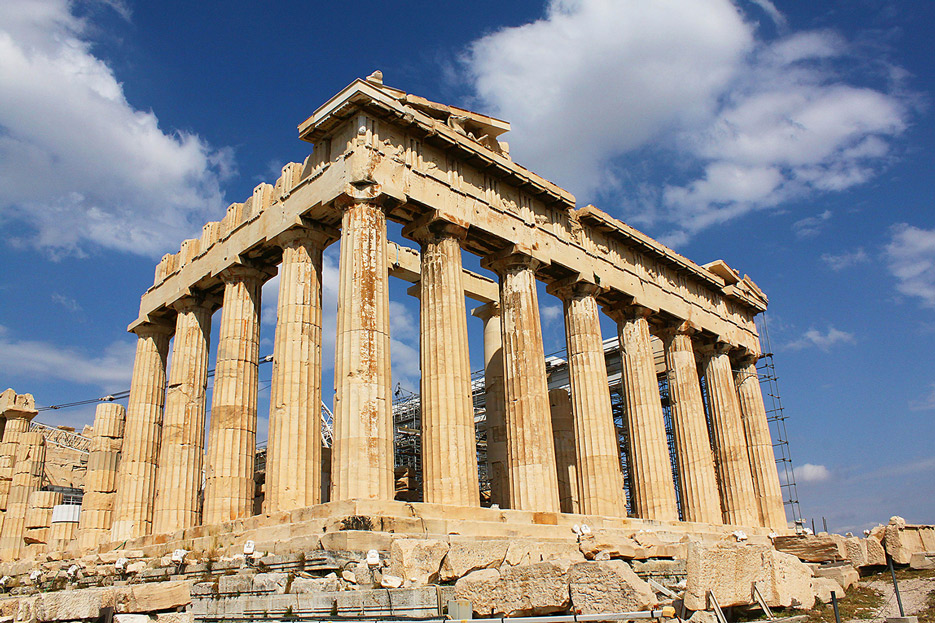
Parthenon, Athens, completed 432 BC
